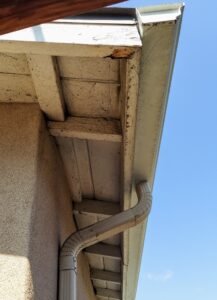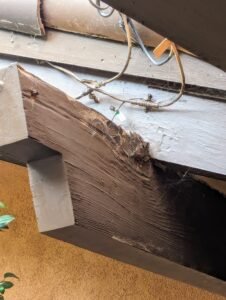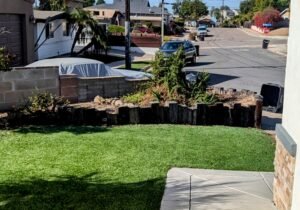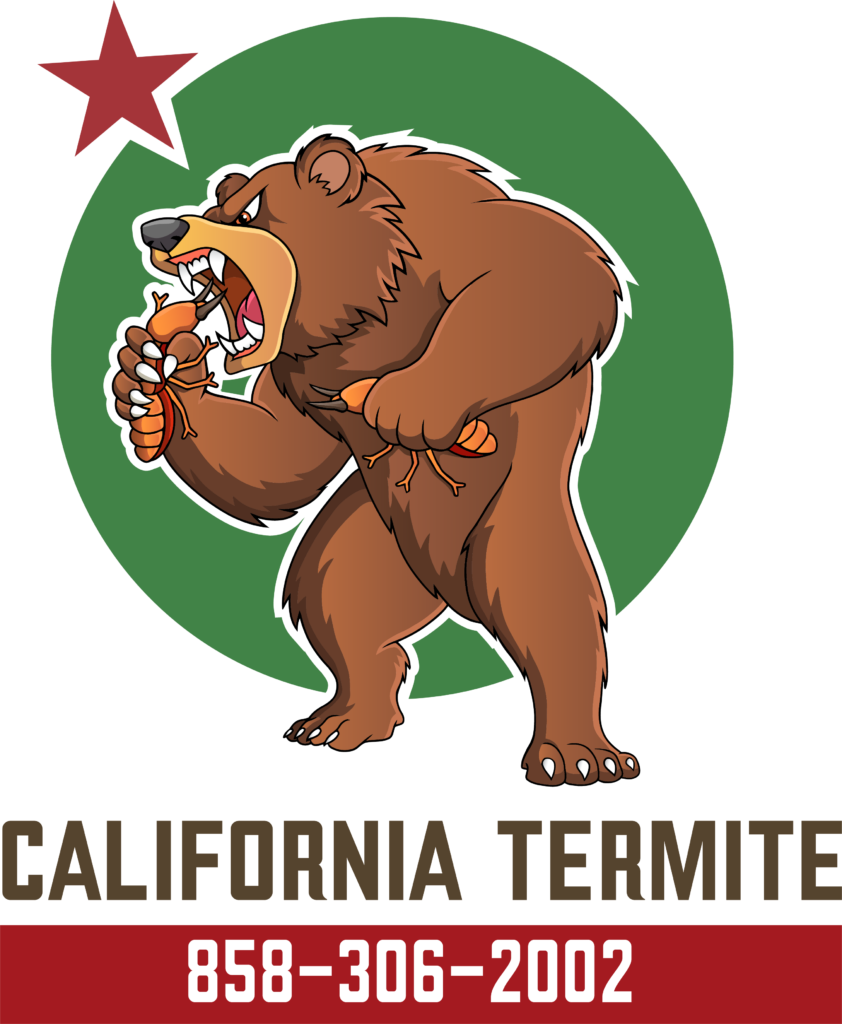11 Conditions that Could Lead to Termites and Wood Rot:
Termites thrive in specific conditions, and moisture is a primary factor. Drywood termites live inside wood, but they cannot survive without some level of moisture—similar to how human civilizations often form around water sources. Below are key conditions that can attract termites and how to address them.
Moisture
Common Sources of Moisture:
- Leaky Plumbing: Even a slow drip can reach soil level, attracting foraging subterranean termites that eventually make their way to wood structures in your walls.
- Irrigation Near Home Perimeters: Watering vegetation close to the foundation can create a moist environment that draws termites.
 Clogged Gutters: Blocked gutters accumulate water, which can seep through seams and onto fascia, acting as a prolonged moisture source for termites.
Clogged Gutters: Blocked gutters accumulate water, which can seep through seams and onto fascia, acting as a prolonged moisture source for termites.
- Crawl Spaces With Poor Ventilation or No Vapor Barriers: Without proper ventilation or a vapor barrier, moisture from the soil can rise into crawl spaces, leading to wood rot and termite infestations.
- Poor Engineering Features:
- Some homes have a wood member at the bottom of the roof pitch that props up the roof tile. It also acts like a dam, trapping moisture that slowly seeps into the home’s eaves.
- Flat Wooden Pergolas: Flat surfaces allow moisture to pool, promoting rot and termites.
 Oversized Rafter Tails: Similar to pergolas, these trap moisture and foster infestations.
Oversized Rafter Tails: Similar to pergolas, these trap moisture and foster infestations.
- Stucco to Soil Contact: Stucco extending to the ground traps moisture, creating an ideal environment for subterranean termites.
Earth-to-Wood Contact
Termites are naturally drawn to wood that sits directly on the ground. Examples include:
- Wood piles, mulch, and stumps
- Decking and patio posts
 Railroad ties used in landscaping
Railroad ties used in landscaping- Wooden flagpoles
- Wood debris in crawl spaces
Solution: All wood should be elevated and insulated with concrete or removed entirely.
Faulty Grade
If soil levels around your home reach or exceed the foundation’s sill plate, it creates earth-to-wood contact. This condition allows termites to bypass inspection areas and establish colonies undetected. Subterranean termites often leave mud tubes that extend from the soil to the foundation and into the home. Proper grading ensures visibility and protection.
Termite-Infested Fences and Dead Trees
Wooden fences and dead trees are common sources of termite activity, yet they are often overlooked in inspections and treatments. Termites infesting a nearby fence or stump can swarm and spread to your home’s eaves and attic spaces.
If you suspect any of these conditions around your home, schedule a free termite inspection with California Termite. Even if we don’t find termite evidence, we’ll provide recommendations to correct these conditions and offer preventative measures to protect your home and save you money in the long term.
